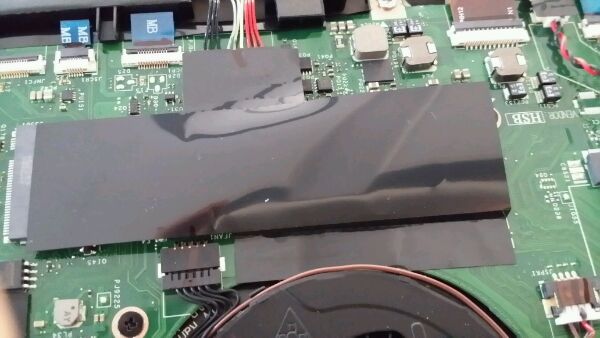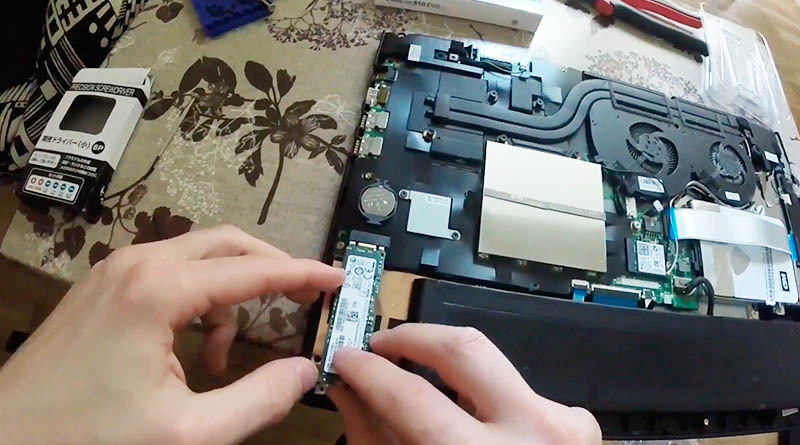Lenovo M 2 Slot
Lenovo M.2 flex adapter. Expensive for a used part. Better to go with a generic M.2 NVME / M.2 SATA pci-e adapter for 80% less money. It accomplishes the exact same thing. Actually a bad design by lenovo. Better to have the extra pci-e lanes on a pci-e slot. There should be a pci-e x8 slot on the system. Lenovo's ThinkPad P52 can be customized quite extensively because it has plenty of room inside for hardware, including dual slots for M.2 PCIe NVMe SSDs. Basic models come with only a hard-disk.
More and more laptops are doing away with, or supplementing their 2.5-inch bays with M.2 slots for solid-state storage. Here’s our guide to upgrading the M.2 SSD in your notebook.
M.2 is a form factor for storage drives in computers – that’s all it is. An M.2 storage drive will work only in a computer with an expansion slot designed to accept an M.2 storage drive.

Before you can upgrade the M.2 drive in your notebook, you need to identify how physically large of an M.2 drive your notebook can accommodate. As of mid-2017, there are three common lengths of M.2 drives:
- 40mm (Type-2240)
- 60mm (Type-2260)
- 80mm (Type-2280)
The most popular length used in notebook computers is 80mm, which is commonly referred to as Type-2280.
How do you know what length drive your notebook supports? One way to go about it is to use a system scanner, such as the one on Crucial’s website. We used it on our Dell Latitude 7480, and it told us the notebook supported an M.2 Type-2280 drive. That’s about as easy as it gets.
You could also refer to the specifications sheet of your notebook, which should be available on the manufacturer’s website. Calling into their support line and asking is a viable alternative.
If your notebook already has an M.2 drive installed, you can look up the drive model, and then research that drive online. To find the model of storage drive in your computer, first open the Device Manager. Here’s how to do it in Windows 10:
Asus M.2 Slot
- On your taskbar, type Device Manager. The first result should be it, so click on the result to open it.
- In the Device Manager, expand Disk drives. This will show you the storage drives connected to your computer. If more than one drive is listed, you’ll need to search online for both model numbers to identify the M.2 drive.
Lenovo T470 M.2 Slot


In the case of our Dell Latitude 7480, the drive is a Toshiba THNSNK256GVN8. Toshiba’s website indicated the drive is sold in an M.2 form factor as a Type-2280 drive only. Since that drive is already installed in our Dell Latitude 7480, we know the notebook can accept a Type-2280 drive.
SATA or PCI Express?
Remember, M.2 refers to the form factor only; it has nothing to do with the interface the drive uses to connect with the computer. There are two common interfaces for M.2 drives as of this writing. The first is Serial ATA, or SATA. The second is PCI Express. You’ll want to take care to buy an M.2 drive that has the same interface as the drive you’re replacing, as a SATA drive will generally not work in a PCI Express slot, and vice versa. You can use a system scanner, like the one we mentioned in the last section, to identify the interface your notebook supports.
We have one final piece of advice if your notebook uses PCI Express drives. Pay very careful attention to whether your notebook supports PCI Express drives with the NVMe protocol built into them. The notebook itself must support the NVMe protocol in order for an NVMe drive to work. NVMe is a new technology designed to improve storage performance, but it’s not yet common.
Which Drive?
There are a myriad of M.2 drives available on the market. Here’s our guidelines for selecting a drive:
- The drive should come from a reputable manufacturer, such as Crucial, Kingston, Corsair, Samsung, Intel, and others. Take a look at our SSD Forum to see what our users recommend.
- The drive should come with a three-year limited warranty at the minimum.
- Break this down to cost per gigabyte. Take the capacity of the drive, e.g. 512GB, and divide it by the cost. That will give you an idea of how expensive a given drive is in relation to others.
- Performance. For general use, this is one area where you probably won’t have to spend a lot of time researching, as just about all new M.2 storage drives on the market will not show noticeable performance differences for day-to-day usage. Pricier drives, such as PCI Express drives supporting the NVMe protocol, will generally have better performance for more storage-intensive activities, but the situations where a drive like that would really be worth the extra over a traditional drive are few and far between.
Online stores, such as Newegg, and manufacturers’ own website stores are ideal places to buy M.2 drives. Review the store’s return policy before pulling the trigger.
Now let’s get to the nuts and bolts of upgrading the M.2 drive in a notebook.
Tech level: Easy to Moderate
Required tools: Philips-head screwdriver, Microfiber towel, and an anti-static bag
Given the multitude of notebooks available on the market with M.2 storage drives, it’s impossible to develop a guide that will work for every notebook. The advice we prepared here is meant to be general, so you may have to modify or add steps to upgrade the M.2 drive in your particular notebook. Anything you do with this guide is at your own risk, and NotebookReview.com isn’t responsible for anything bad that happens. Remember to ask in our forums if you need help.
Lenovo 330s M.2 Slot

The notebook we’re using for presentation purposes is the Dell Latitude 7480.

Preparation
The first step is to completely shut down the notebook computer. (If you’re planning to upgrade the drive that your computer’s operating system is installed on, you’ll want to have your operating system install media handy, and also have all your data backed up.) Unplug the notebook once it’s shut off. If your notebook has a removable battery, take take that out as well, and press the power button several times to drain any excess electricity. Finally, close the notebook’s display lid.
Disassembly
Your best bet before proceeding is to look up the service or owner’s manual for your particular notebook computer on the manufacturer’s website. Most of the time, access to a notebook’s internal components is done through the bottom of the chassis, and that’s the assumption we’re making in this guide.
Take the microfiber towel, and lay it on a clean working surface. Flip over your notebook, and place it display-side down on top of the towel. The purpose of using the towel is to prevent scratches to the notebook’s lid, or the surface the notebook is resting on.
Some notebooks have dedicated component access panels, which should be obvious. (Look for a cutout section.) Others, like our Dell Latitude 7480, require the removal of the entire bottom panel of the chassis. The removal of eight Philips-head screws is required on this notebook.
The screws on our Dell actually don’t come out; they’re held in by retainers when they are fully unscrewed.
The bottom panel can be gently pried up at this point. With our Dell Latitude 7480, we used our fingers to gently pry up the rear of the panel, next to the display hinge. After removal, put the panel and its screws in a safe place. If you feel like you’re forcing something, stop.
The next step is to identify the M.2 slot on the motherboard. The M.2 Type-2280 (80mm) drive in our notebook is about the size of a stick of chewing gum, highlighted at the lower right corner of this photo. An M.2 Type-2260 (60mm) drive would be three quarters as long as this drive, and an M.2 Type-2240 (40mm) drive would be half as long.
A single Philips-head screw holds the M.2 drive in place. Carefully remove this with a screwdriver, and put the screw in a safe place.
To remove the M.2 drive, use your thumb and forefinger to grasp each side of the drive about two-thirds of the way towards the screw point, and gently pull horizontally in the direction of the screw slot. It should slide out with minimal effort. If it feels like you’re using too much effort, you are.
Take the old M.2 drive and place it in an anti-static bag. You can probably use the bag your new M.2 drive arrived in. Be careful not to touch its gold connecting pins, as this can degrade the drive’s performance.
You’ll install your new M.2 drive by doing the reverse of what you just did. Line up the drive’s gold connection points with the slot on the notebook’s motherboard. The drive will only fit one way, and can’t be inserted upside down. Typically, the black chips on one side of the M.2 drive will face upwards if the drive is oriented correctly.
To verify you’ve pushed the drive in far enough, look at the screw cutout at the opposite end. You should see the screw hole on the notebook’s motherboard. Once this is the case, put back the Philips-head screw, and screw it back in. It shouldn’t be iron-tight, just enough that it won’t come loose. You can damage the M.2 drive and the computer if you tighten the screw too much.
And that’s it! Put back the bottom panel of the chassis, and screw it all back together. We suggest putting the bottom panel in place and gently pressing down the edges first, which will ensure it’s lined up correctly. Start with the screws on one side, and work your way around.
Final Thoughts
The points we outlined for selecting an M.2 drive for purchase are all you should need to make the right decision. Using the cost per gigabyte method for comparison will let you see which drives are a better value than others. As always, if a deal is too good to be true, it is.
The M.2 drive upgrade process for notebooks can vary greatly; we attempted to put together a general guide, showing how to upgrade a typical notebook. In our case, it was a Dell Latitude 7480, a 14-inch business-class model that isn’t all that unique in terms of its upgrade process. At the minimum, the process of uninstalling the M.2 drive itself, and re-installing it in your notebook should line up perfectly with this guide.
Experts in our forums are readily available to help you with any questions. The Hardware forum in particular is a good place to discuss the ins and outs of upgrading notebooks. And don’t forget to visit our Windows OS and Software forum for advice on installing Windows 10 or another operating system and software on your new M.2 drive. Happy upgrading!